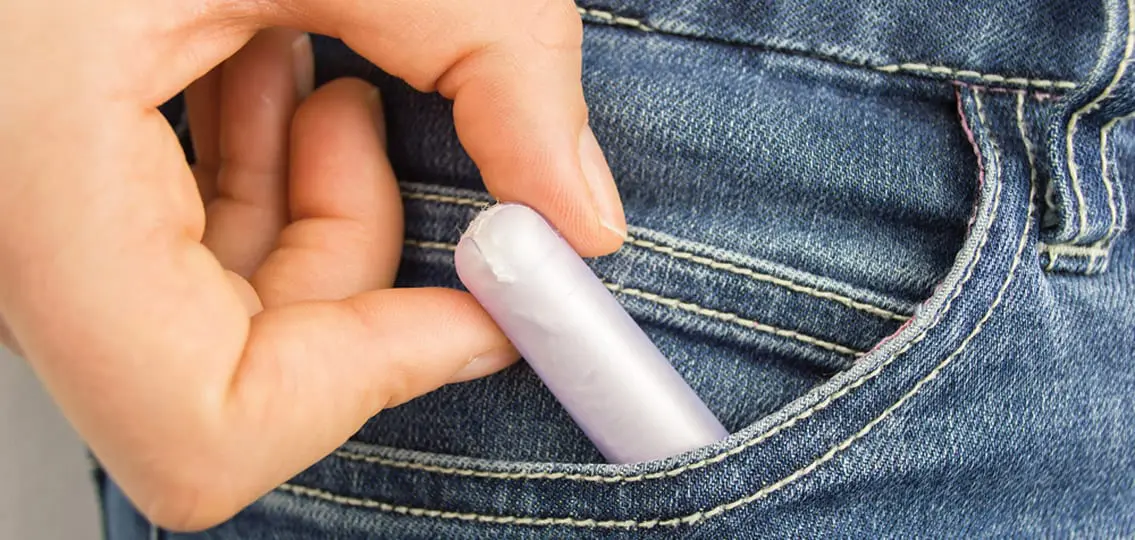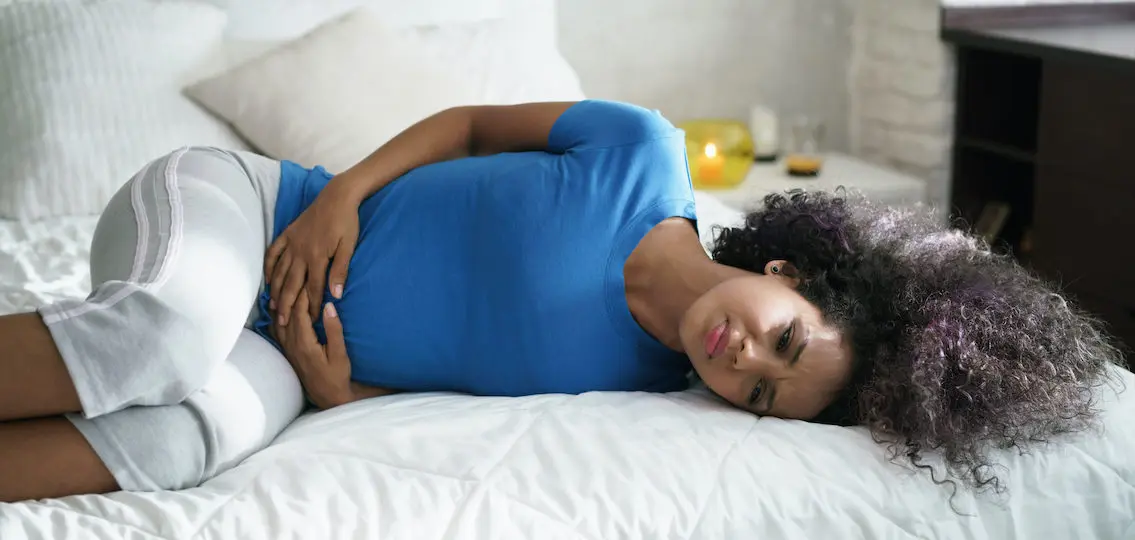Missy woke up in the middle of the night to the unpleasant monthly aching in her abdomen and back. She forced herself out of bed and trudged to the bathroom. She suddenly felt a sickening wave of nausea and ran to the toilet. She started to loudly wretch but hardly vomited anything. She put in a tampon and made her way back to bed in pain. Now in tears, she couldn’t help but wonder with frustration how many days of her life would be ruined because of her period. She didn’t know what to do about menstrual cramps.

What Are Menstrual Cramps?
Menstrual cramps, or dysmenorrhea, are lower abdominal or back pain that occur a few days before or during menstrual bleeding. Headaches, dizziness, nausea, and diarrhea often accompany menstrual cramps. While the majority of teenage girls only experience mild discomfort, menstrual cramps can be severe and disabling enough to prevent normal daily functioning for some girls.
The typical menstrual cycle begins every 28-35 days. Day one of that cycle is when menstrual bleeding starts, with bleeding usually lasting from 2 to 7 days. Around mid-cycle, ovulation typically occurs, meaning an egg is released from the ovary. After ovulation, the lining of the uterus starts thickening with the blood that sheds at the beginning of the next cycle.
Menstrual cramps occur because the blood lining that collected in the uterus needs to shed. Prostaglandins are responsible for cramping pain. They are chemicals in the body that contract the uterus to aid with shedding menstrual blood.
How to Prevent Menstrual Cramps
1. Reduce Stress
Excessive amounts of stress can worsen many medical problems, including menstrual cramps. Plenty of rest and adequate nutrition can help to destress. A diet with lots of whole grains, fruits, vegetables, and water can help to decrease stressors on the mind and body.
2. Exercise and Yoga
Keeping the body physically active reduces mental and physical stress. Hormones called endorphins are released during these activities. They combat stress and reduce pain, which can help to reduce menstrual cramps before they happen or while they are occurring.
3. Oral Contraceptive Pills
Oral contraceptives are prescription medicine that contain derivates of the hormones estrogen and progesterone which replace the body’s naturally occurring menstrual cycle and prevent ovulation from occurring in the body. Without ovulation, there won’t be prostaglandins that cause the pain.
4. Omega 3-Fatty Acids
Fish oil supplements or foods rich in Omega 3-fatty acids are thought to decrease the incidence of menstrual cramps. Examples of period food rich in omega 3-fatty acids include:
- Flaxseed
- Chia seeds
- Walnuts
- Avocados
- Salmon
- Tofu
- Brussel sprouts
How to Treat Menstrual Cramps
1. Non-Steroidal Anti-Inflammatory Drugs (NSAIDS)
NSAIDs (such as Advil) target prostaglandins to block them from causing pain. Having NSAIDs in the system prior to the onset of menstrual cramps can reduce the amount of prostaglandins that are present in the uterus, which decreases the pain.
2. Massage
The uterus is a muscle, so muscle relaxation techniques are effective for menstrual cramps. A gentle but firm massage to the lower back and abdomen can relax the muscles and mind to relieve pain. Because the uterus lies towards the back of the body, back massages may even help with cramps that are happening in the abdomen.
3. Local heat
A hot shower or heating pad are safe sources of local heat. The heat should be directed at the lower back and abdomen to relax the mind and body. This in turn relaxes the muscles to decrease pain.
4. Peppermint oil
Natural chemicals in peppermint work by decreasing input to pain receptors. Rubbing peppermint oil on the areas of pain can decrease menstrual cramps.
Finding Help for Period Cramps
If the above techniques do not reduce menstrual cramps, then seeing a gynecologist may be a good idea. A doctor will be able to assess for an underlying condition that may be causing excessive pain. Prescribing oral contraceptive for menstrual cramps can be done by most primary care doctors and pediatricians.
For teens who are not yet sexually active, seeing a gynecologist about period cramps will not be a painful or invasive experience. Gynecological exams generally do not happen until after an adolescent becomes sexually active or turns 21. But discuss any concerns with your doctor prior to an appointment.

Menstrual cramps are a normal part of growing up for many girls, but there are ways to prevent and treat the pain. No teenage girl should have to suffer or miss out on her life because of her period.




